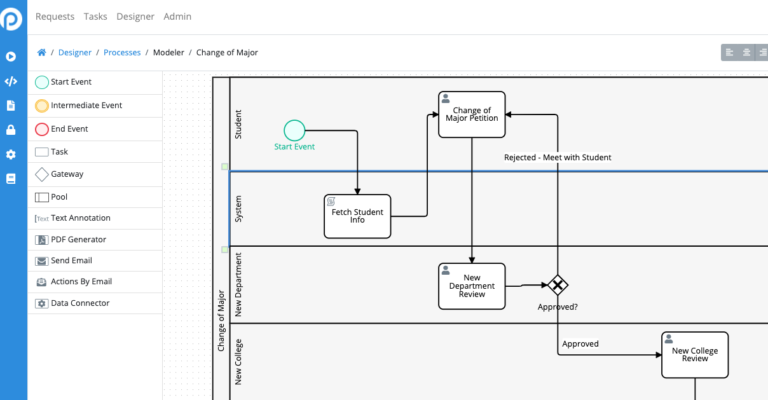Process mapping is a visualization tool used to illustrate each of the steps involved in a business process. A key ingredient to successful process mapping is the crystal clear assignment of responsibilities. When people are not sure of their role, projects often experience delays, logjams, and bottlenecks. How can you eliminate this productivity obstacle in your process mapping? By using swimlanes.
What are swimlanes?
Swimlanes typically take the form of flowcharts or diagrams, making it easy for all stakeholders to visualize each role involved in completing a process. Imagine the entire process as a swimming pool. Just as a lifeguard divvies up a 100m pool into individual lanes come time for lap swim, swimlanes split up a large project into designated lanes of responsibility. You can use swimlanes to delegate responsibility for a specific set of tasks to:
- A department like marketing or customer service
- A more specific field of subject matter experts like Sales Engineers or Client Success Managers
- A precise individual like Chelsea or Adam
Swimlane diagrams make it easy to see an entire workflow and indicate who will take on each step from start-to-finish.
How swimlanes improve process mapping
Swimlanes not only boost process efficiency but also foster cross-department collaboration. Team members appreciate feeling a sense of ownership and accomplishment—in fact, it’s one of the leading ways to retain top talent. Instead of team members feeling siloed in a small sliver of a project, swimlanes provide stakeholders with a full view into how their contributions impact the project as a whole. Swimlane diagrams can boost employee engagement by illustrating how each piece of the puzzle fits together across an entire organization. Swimlanes can also help your team identify responsibility gaps and proactively identify any potential communication obstacles.
How to map a swimlane diagram
Start by selecting a specific process to work with. Each process should have a clearly defined start and endpoint.
- A swimlane diagram starts with a handful of columns or rows (your “swimlanes”) labeled with the involved departments, skill sets, or individuals.
- In each column or row, break down the process into manageable tasks. Each step should be as granular as possible. Avoid clumping too many tasks into one step: the purpose of a swimlane diagram is to make it crystal clear what needs to be done and who is responsible for it.
For starters, you can enclose each step in a rectangle, but there are many different shapes used to indicate different types of actions. You can learn more about BPMN symbols here in process mapping.
- Time to move information or responsibility over to another department or employee? Use arrows to connect to the next swim lane.
A swimlane diagram is useful for ensuring every actor in a process understands their role in the overall picture. Use this important process mapping tool to boost internal communication, streamline efficiency, and ensure a successful process from start-to-finish.





